| Early Spring Date: | April 25 |
| Late Spring Date: | May 31 |
| Best Dates to See in Spring: | April 29 - May 24 |
Black-billed Cuckoo
Coccyzus erythropthalmus
| Early Spring Date: | April 30 |
| Late Spring Date: | May 29 |
| Infrequently Seen | |
Spring: Yellow-billed Cuckoos breed in the Washington metro area. They might breed either at Monticello Park or in the surrounding neighborhood. Black-billed Cuckoos are uncommon migrants. In recent years, more of them have been seen at Monticello. They breed in the northern United States and the Appalachian Mountains.
Fall: Monticello has about 5 Yellow-billed Cuckoo sightings each fall, with most occurring during the first 3 weeks in September. Black-billed Cuckoos have rarely been recorded at Monticello Park during the fall.
Where to See Them in the Park
Both cuckoo species usually perch in the canopy, and they can be difficult to find even if they are vocalizing. They sometimes come lower, and on rare occasions, will go into the stream for a quick drink.
Physical Descriptions
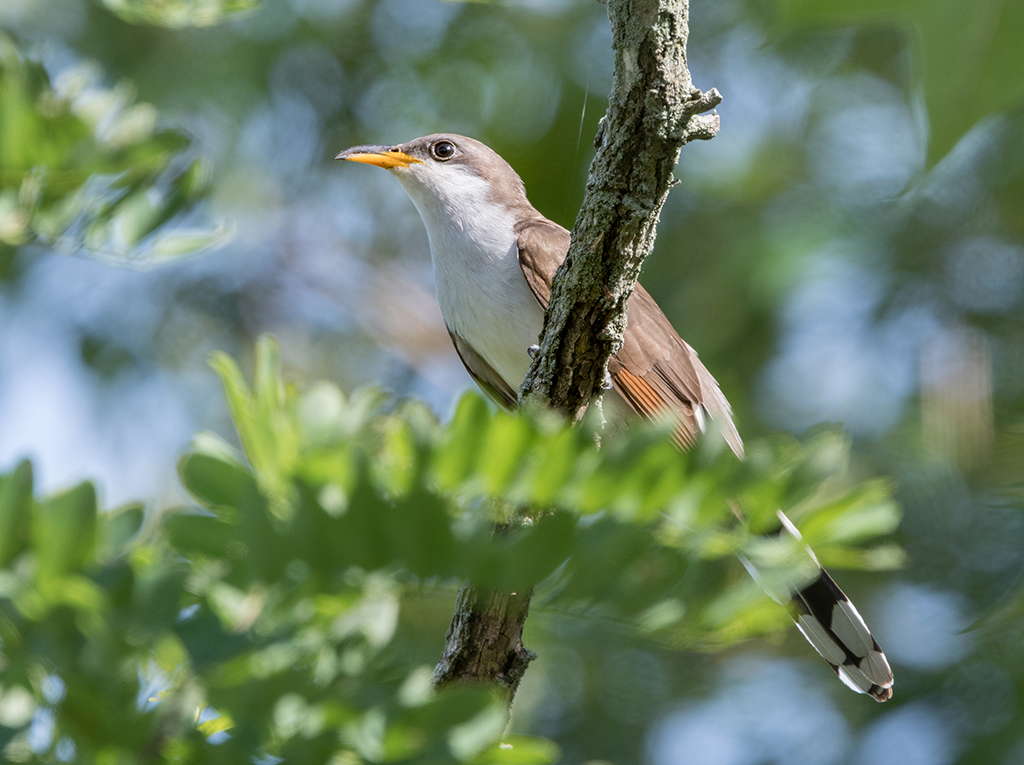
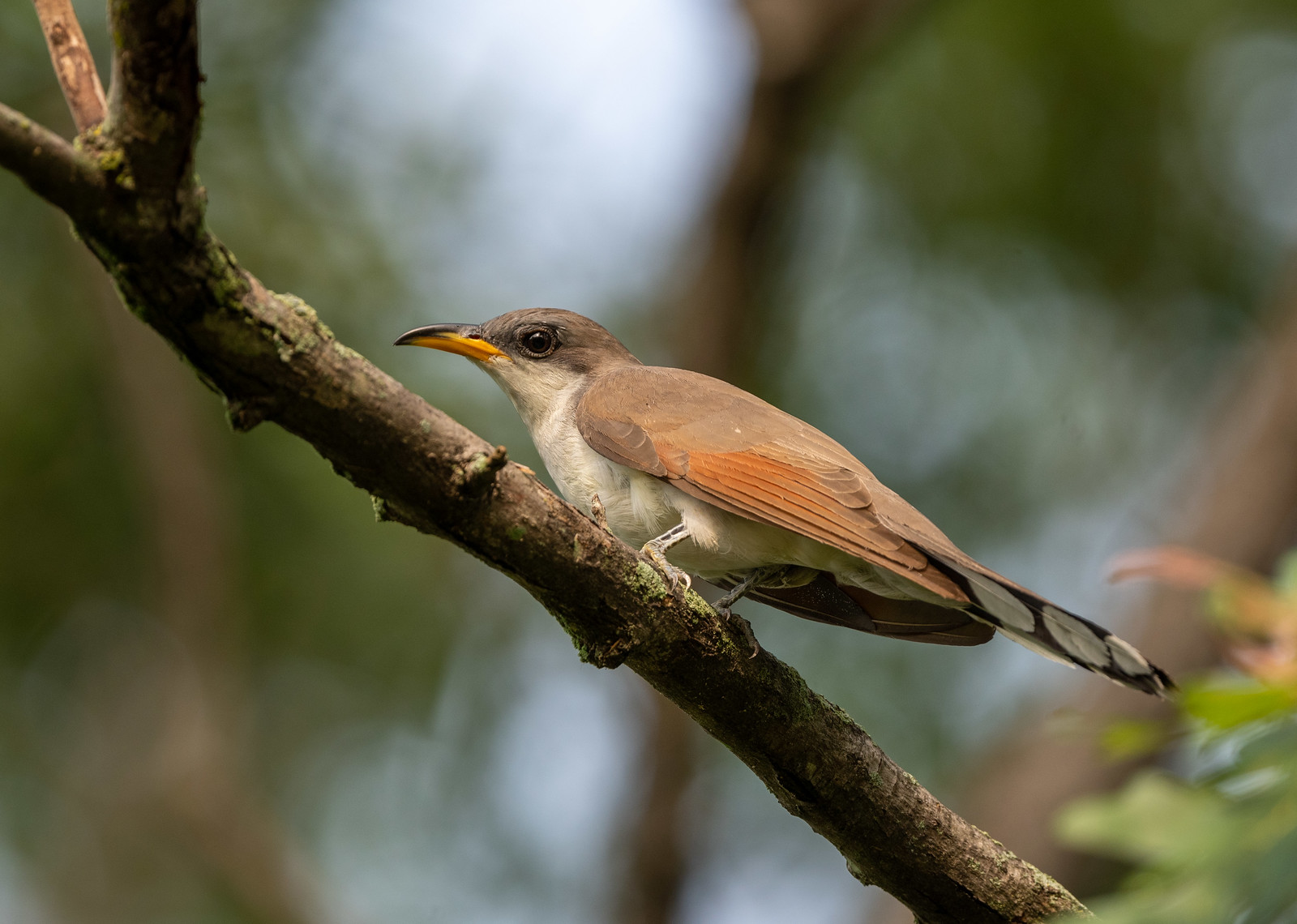
Cuckoos are large birds with a long tail and pointed wings; in flight, they look a bit like a falcon. The two cuckoo species look similar, but there are key differences. The Yellow-billed Cuckoo has a thick bill, with the lower half yellow and the upper half mostly black. The underparts are white, the back is brown, and the wings have rufous feathers. The black undertail feathers have broad white tips that look like spots. The sexes look the same, and adult plumage does not vary from the spring to the fall.
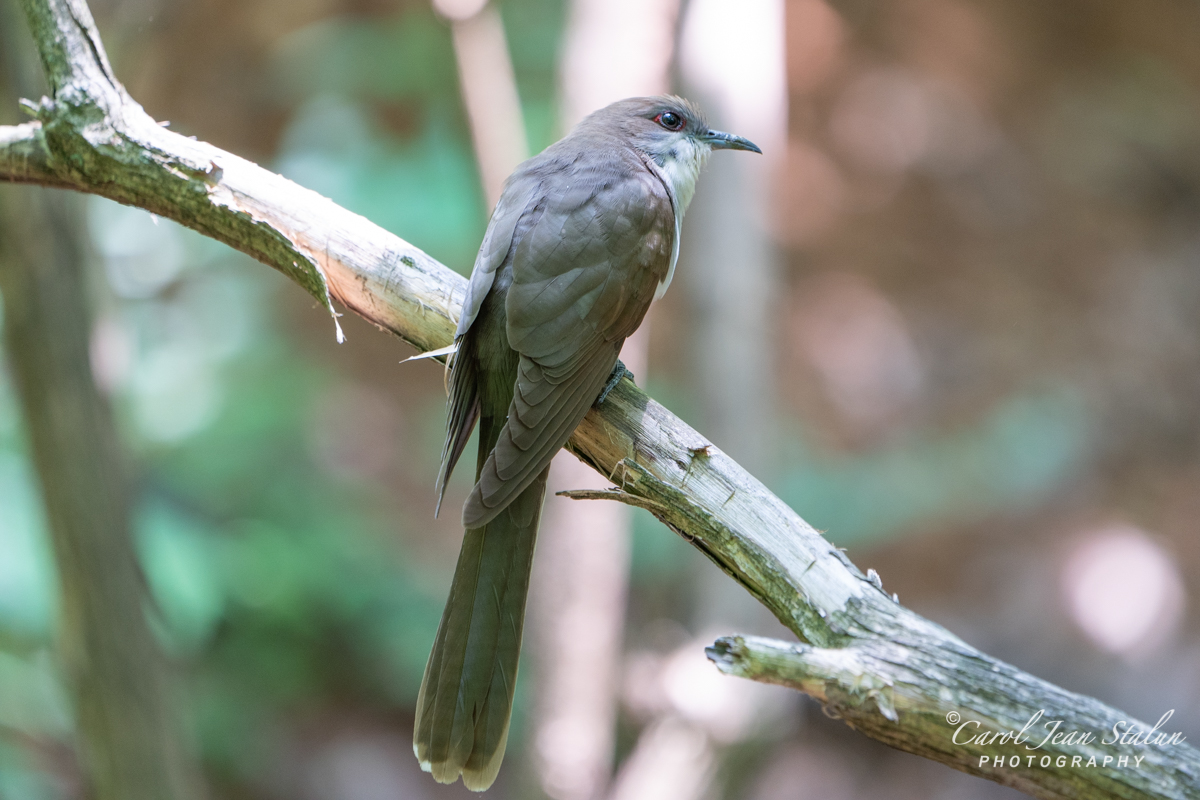

Black-billed Cuckoos have a black bill with no yellow. They have a red orbital ring (the skin around their eye), while the orbital ring on the Yellow-billed ranges from yellow to brown. The tail feathers of the Black-billed have white tips that look like narrow bars instead of white spots. Black-billed Cuckoos have little or no rufous in their wings. They generally stay high in the trees, but they sometimes come lower if they find a fallen tree with tent caterpillars. As with the Yellow-billed, the sexes look the same, and adult plumage does not vary from the spring to the fall.
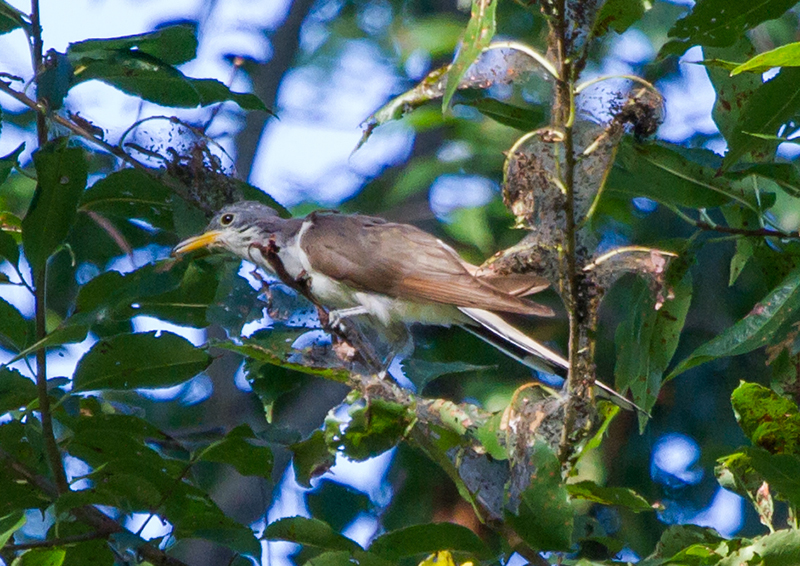
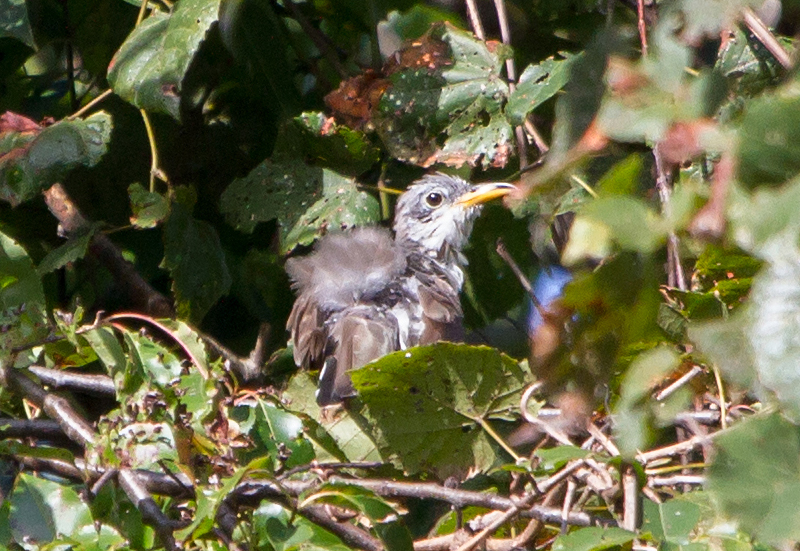
Some juvenile Yellow-billed Cuckoos show traces of downy plumage. Depending on the age of the bird, some might have a dark bill with no yellow.
Vocalizations
A common vocalization of the Yellow-billed Cuckoo is a long series of notes, often of three types, with the first few short and woody, the second few longer and woody, and the third a series of loud, sweet coo sounds. The typical vocalization of the Black-billed is a much simpler coo-coo-coo-coo, delivered quickly.
Hear the vocalizations of the Yellow-billed Cuckoo.
Hear the vocalizations of the Black-billed Cuckoo.
Notes
Worldwide, the cuckoo family has more than 140 species, some of whom are famous for being parasitic nesters — i.e., they lay their eggs in the nests of other species and let the hosts incubate the eggs and raise the young. Yellow-billed and Black-billed Cuckoos both build nests and raise young. However, Yellow-billed Cuckoos will sometimes lay their eggs in the nests of Black-billed Cuckoos, and some Black-billed Cuckoos will lay their eggs in the nests of other Black-billed Cuckoos.
Origin of Names
Common Names: Yellow-billed from the yellow lower mandible. Black-billed from the black bill. Cuckoo from the call of the European Cuckoo.
Genus Name: Coccyzus is a cuckoo.
Species Names: Americanus means from America. Erythropthalmus means red-eyed, even though the red is on the skin surrounding the eye.
Yellow-billed Cuckoo video footage
Black-billed Cuckoo video footage
Return to the Index
